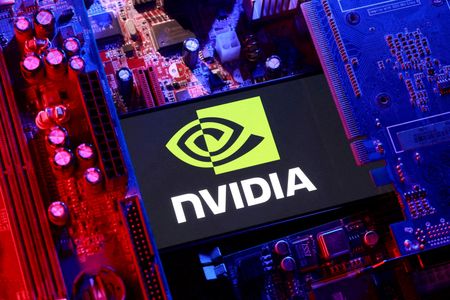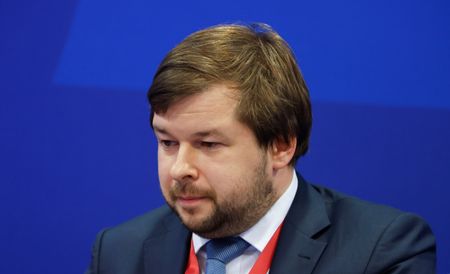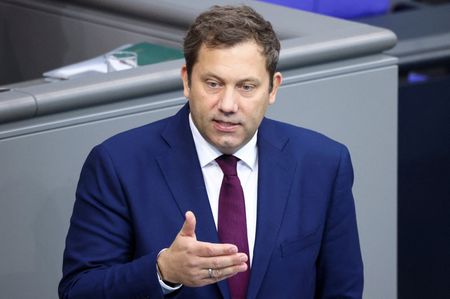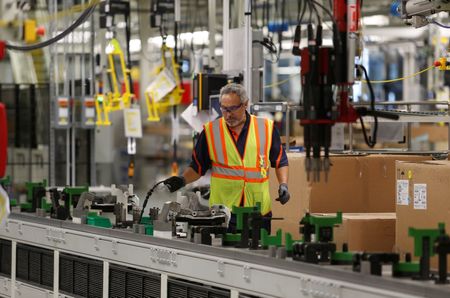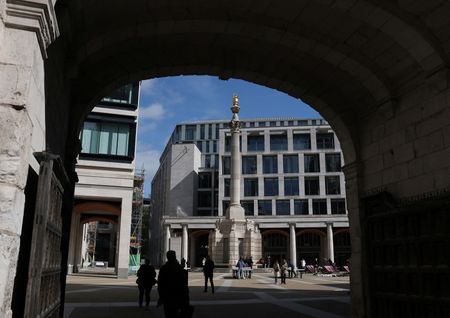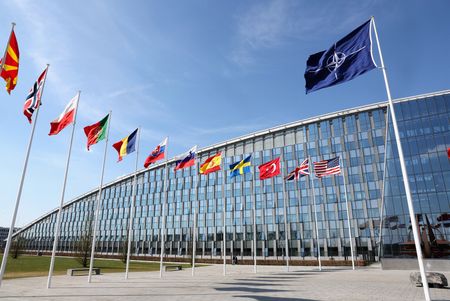By Stephen Nellis
SAN FRANCISCO (Reuters) -Nvidia’s move to invest up to $100 billion into OpenAI at the same time it plans to supply millions of its market-leading artificial intelligence chips to the ChatGPT creator has little precedent in the tech industry.
Under the deal, Nvidia will be taking a financial stake in one of its largest customers, but without receiving any voting power in return, according to a person close to OpenAI. The ChatGPT maker will receive some – but not nearly all – of the capital it needs for its ambitious plans to build the sprawling supercomputers required to develop new generations of AI.
Nvidia’s initial $10 billion investment would go toward a gigawatt of capacity using its next-generation Vera Rubin chips, with a build-out starting in the second half of 2026.
The deal raises many questions. Here are five of the biggest ones:
WHERE DOES THE REST OF THE MONEY COME FROM?
In an earnings call in August, Nvidia CEO Jensen Huang said that AI data centers cost about $50 billion per gigawatt of capacity to build out, with about $35 billion of that money going toward Nvidia’s chips and gear.
Nvidia has committed to investing in OpenAI to help it build 10 gigawatts of data center capacity, or about $10 billion per gigawatt. That leaves about $40 billion in additional capital required for each gigawatt of capacity OpenAI plans to build. OpenAI has not signaled whether it agrees with Huang’s cost estimates or, if it does, where it would procure the additional funds.
OpenAI did not return a request for comment about its funding plans. Nvidia declined to comment beyond what it has said publicly.
WHAT DOES IT MEAN FOR OPENAI’S EFFORTS TO BECOME A FOR-PROFIT?
OpenAI is a non-profit corporation, a structure that dates to its days as an AI research group. It has been looking to change to a more conventional structure that would allow it to more easily raise money and hold a public offering.
OpenAI has held extensive discussions with Microsoft, a major shareholder that funded OpenAI’s early computing needs, to change its structure. Earlier this month, the two firms said they had reached a tentative deal on OpenAI converting to a for-profit public benefit corporation that would be overseen by OpenAI’s existing non-profit, though that move still needs approval from state officials in Delaware and California.
On Monday, a person familiar with the matter told Reuters that Nvidia would be making a cash investment into OpenAI similar to other OpenAI investors. Moreover, Nvidia’s initial $10 billion investment will not begin until OpenAI and Nvidia reach a definitive agreement in the coming months.
It was not immediately clear whether Nvidia planned to invest in OpenAI’s non-profit entity or whether its plans depend on OpenAI’s conversion to a public benefit corporation overseen by a non-profit.
WHAT DOES IT MEAN FOR OPENAI’S VALUATION?
OpenAI is currently valued at $500 billion, and a person familiar with the matter told Reuters that Nvidia’s initial $10 billion investment for one gigawatt of capacity would be at that valuation.
But neither Nvidia nor OpenAI gave a timeframe for the entire 10 gigawatts of capacity coming online or for the $100 billion of investment to take place. Also unanswered is whether subsequent Nvidia investments in OpenAI would take place at OpenAI’s current valuation, or at the valuation of the company at the time Nvidia makes each investment.
WHAT DOES IT MEAN FOR COMPETITION?
The deal between Nvidia and OpenAI could see Nvidia earmarking a significant number of its chips, which remain in high demand several years into the AI boom and access to which can determine success or failure in the field, to a single customer in which it is also a shareholder.
An important question is whether OpenAI’s rivals such as Anthropic, or even Microsoft, which competes with OpenAI to sell AI technology to businesses, will retain access to Nvidia’s chips. The deal also raises questions about whether AMD, which is aiming to compete with Nvidia in selling chips to OpenAI and others, will have a viable chance of selling chips to AI companies.
WHAT DOES IT MEAN FOR ORACLE?
Oracle said earlier this month that it has signed hundreds of billions of dollars in contracts to provide cloud computing services to OpenAI and a handful of other large customers, which sent its stock soaring and made co-founder Larry Ellison one of the world’s richest people.
But one of the key questions lingering after that forecast – and a question that debt-rating firm Moody’s raised – is whether OpenAI has the cash to pay for the contracts.
On Monday, shortly before Nvidia’s announcement, Oracle re-affirmed its forecast as it named two new CEOs. It is possible that Nvidia’s investment plans could put Oracle’s revenue forecast on a firmer footing because a key customer, OpenAI, has fresh capital commitments.
(Reporting by Stephen Nellis in San Francisco; Editing by Muralikumar Anantharaman)

